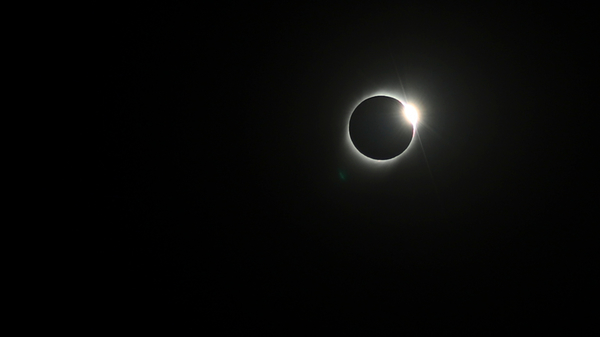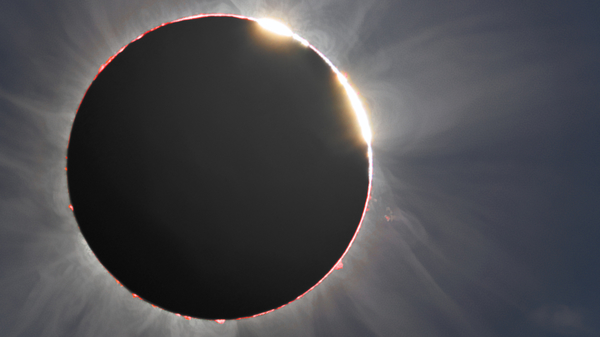Total Eclipses: What Is the Diamond Ring?
See the Sun become a dazzling jewel of light in the sky.

The diamond ring is one of the iconic moments of a total solar eclipse.
©Anne Buckle/timeanddate
The Lead-In to Totality
As totality approaches during a total solar eclipse, the solar corona forms a faint ring around the Moon. Meanwhile, the Crescent Sun shrinks to a single, dazzling jewel of sunlight—producing the effect of a diamond ring in the sky.
Seconds later, the jewel of sunlight breaks up into points of light known as Baily’s beads.
Baily’s beads and the diamond ring can also be seen, in reverse order, after the end of totality.
Not a Feature of Annular Eclipses
Although Baily’s beads can be seen at total and annular eclipses, the diamond ring effect is only observable during a total eclipse.
Watch a Replay of the Diamond Ring
The following video shows how the diamond ring and Baily’s Beads appeared before and after one minute of totality during the April 20, 2023, total solar eclipse in Australia.
timeanddate.com was in the small town of Exmouth, Western Australia, for the total solar eclipse of April 2023.
©timeanddate.com/Perth Observatory/MIT-NASA Eclipse Expedition
How to See the Diamond Ring
IMPORTANT: A proper solar filter—such as eclipse glasses—MUST be used for looking at the diamond ring and Baily’s beads.
During a total solar eclipse, eclipse glasses should only be removed when the final Baily’s bead has disappeared, and the Sun is completely covered by the Moon.
How to Photograph the Diamond Ring
To capture the diamond ring and Baily’s beads with a camera or video camera, a solar filter should not be used.
IMPORTANT: do NOT look at the Sun through the camera viewfinder before or during the diamond ring and Baily’s beads. The camera must be set up and adjusted in advance, using a solar filter.
The solar filter can be removed from the camera around 30 seconds before the diamond ring and Baily’s beads occur. Be careful when removing the filter, so as not to disturb the setup and alignment of the camera.
The Double Diamond Ring

A double diamond ring, captured at the total solar eclipse of November 2013.
©ESA/P. Horálek, J. Sládeček and M. Druckmüller
The edge of the Moon is not smooth: it is made up of towering peaks and deep valleys.
In the same way that this unevenness produces the effect of Baily’s beads, it can also produce a double diamond ring effect.
Did You Know?
One of the first photographs of the diamond ring appeared in a report for the journal Popular Astronomy, following the total solar eclipse of January 24, 1925, in the United States.
According to the astronomer Alice Hall Farnsworth, the photograph was intended to be a long exposure to take a picture of the outer corona. However, it “was cut short by the re-appearing sun and shows well the ‘diamond ring’ effect which was so universally noted.”